Although their figures are often confused with the famous Marx line of dinosaurs, Sinclair’s Ankylosaurs has its own share of unique features.
When we think of “retro” dinosaur depictions, many probably think first of tall theropods dragging their tails or the massive sloped shapes of lumbering sauropods. These old reconstructions remain pervasive in pop culture, but modern scientific understanding has significantly changed our depictions of these animals. One group of dinosaurs that more subtly reflects how much dinosaur imagery has changed is the ankylosaurs – look up vintage art of Ankylosaurus, Scolosaurus, or “Palaeoscincus,” and you’ll likely see pictures of short, squat creatures sitting statuesque among the foliage, or hunkering down beneath the feet of bothersome tyrannosaurs. Recent studies on their anatomical and behavioral traits including muscular tongues, digging adaptations, and even potential swimming capabilities of certain specimens have helped to flesh out this group of tanky herbivores as more lively and unique than our traditional reconstructions might suggest. However, Ankylosaurus and its kin are still predominantly described and illustrated to be slow-moving, heavy-set animals.
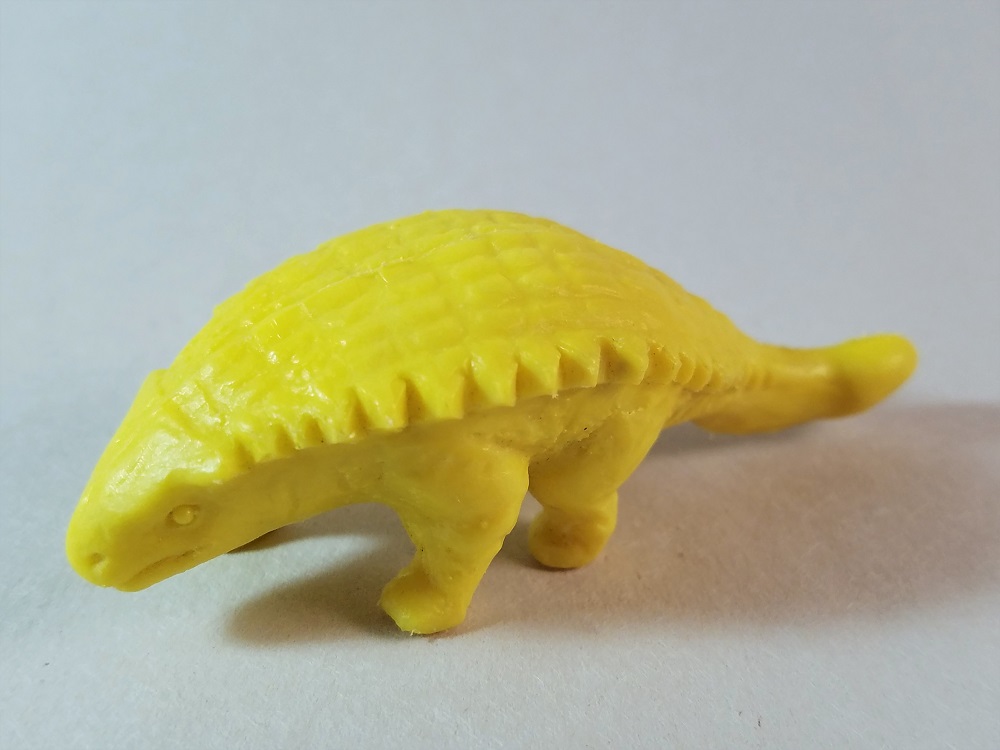
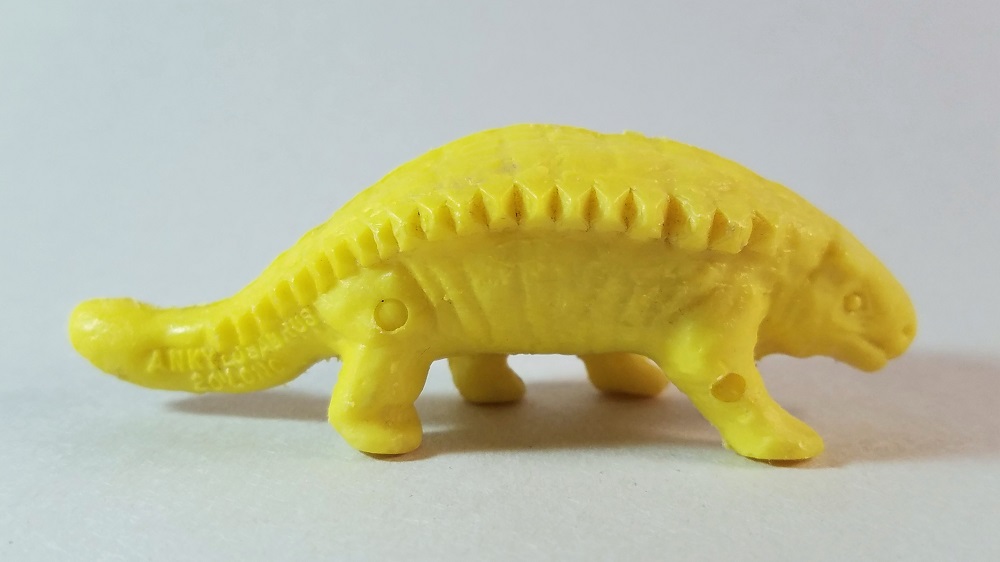
Ankylosaurus has, of course, been reproduced in toy form many times by many companies over the years, going all the way back to 1955 as part of Marx’s second mold group of plastic toys. In 1964, Sinclair Oil Company did their own spin on the “fused reptile,” producing a figurine as part of a six-piece set to promote the life-size fiberglass models featured in their Dinoland exhibit for the World’s Fair. The exhibit models, sculpted by Louis Paul Jones, were designed largely based on the artwork of Charles R. Knight, with paleontologist Barnum Brown providing additional input. The final Ankylosaurus sculpture arguably bore more resemblance to the rendition seen in Rudolph Zallinger’s Age of Reptiles mural, which the illustration seen in Sinclair’s own complimentary booklet also appears to be based on. However, the Sinclair toy has a few unique traits of its own.
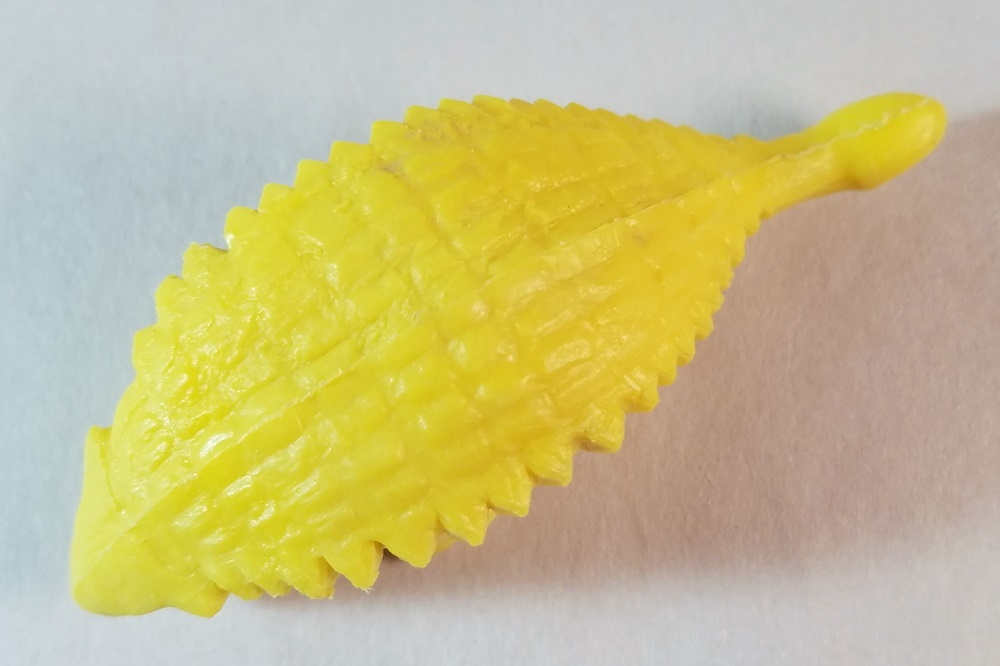
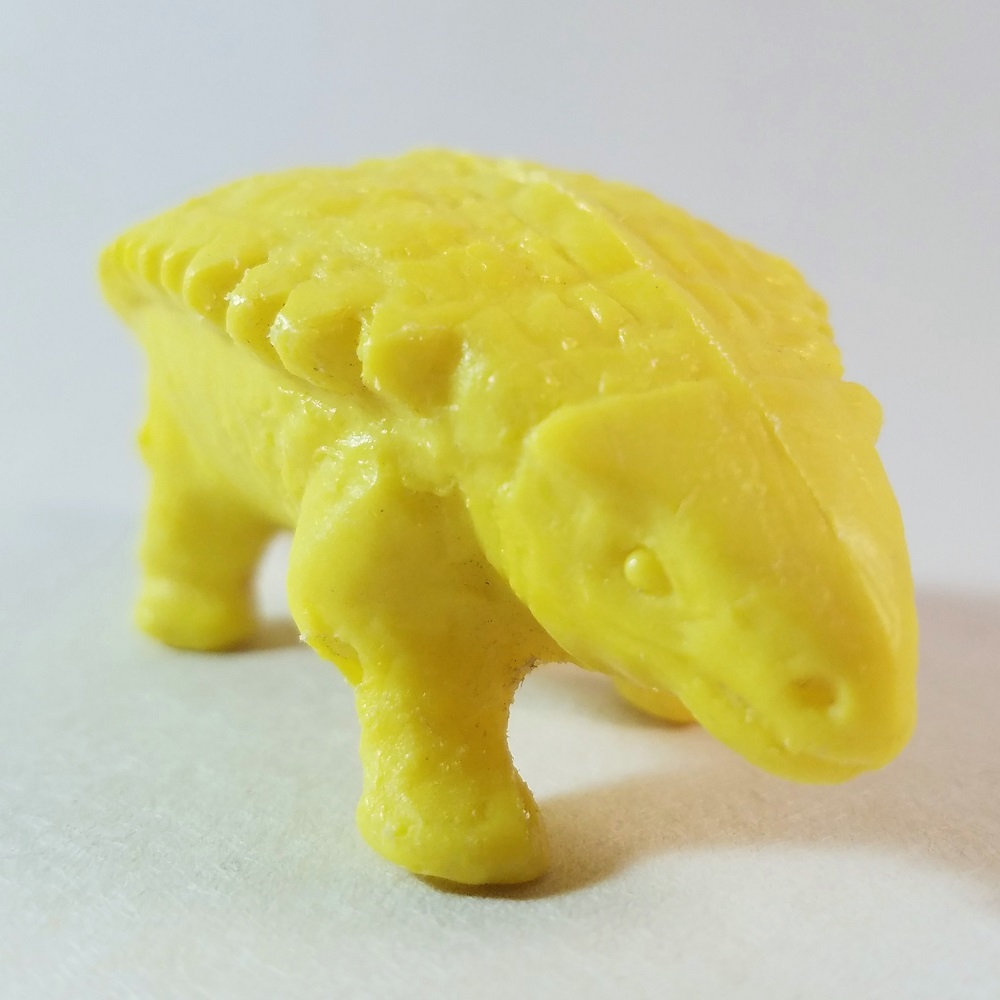
Sinclair’s Ankylosaurus figurine measures just about 8 cm (3.25 inches) in length. Its body is slung low to the ground, with the back gently sloped to point the head and tail downwards. The legs are short and spread in a casual walking position. The skull is somewhat flat and the snout elongated, more like depictions of the now-invalid taxon Palaeoscincus. Although Sinclair figures are sometimes mistaken for or compared to their predecessors and contemporaries in the famous Marx toy line, Sinclair’s Ankylosaurus bears little to no resemblance to its Marx counterpart.
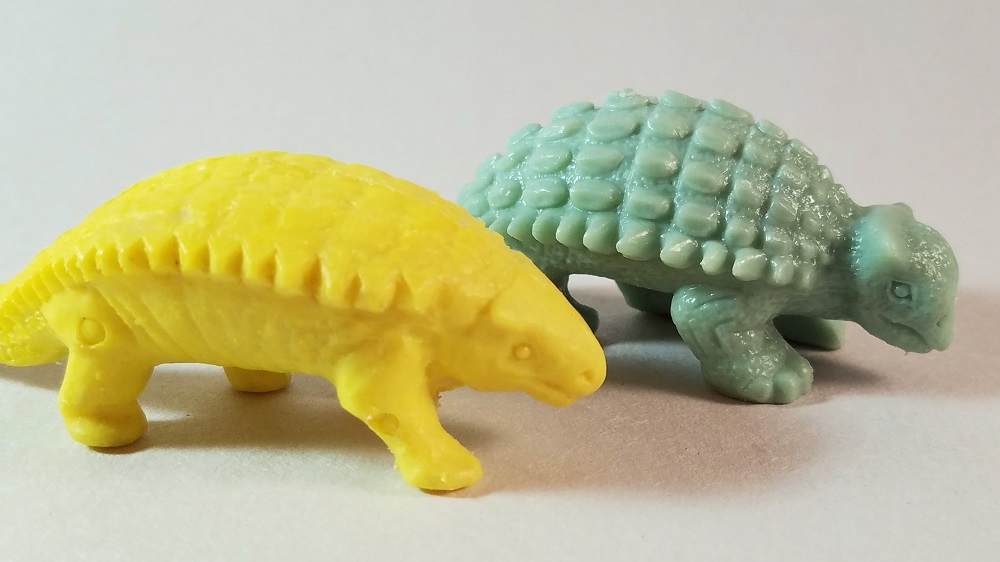
In the 1970s, however, the toy company Tim Mee would produce an Ankylosaurus of their own, which bore a striking resemblance to the older, larger Sinclair.
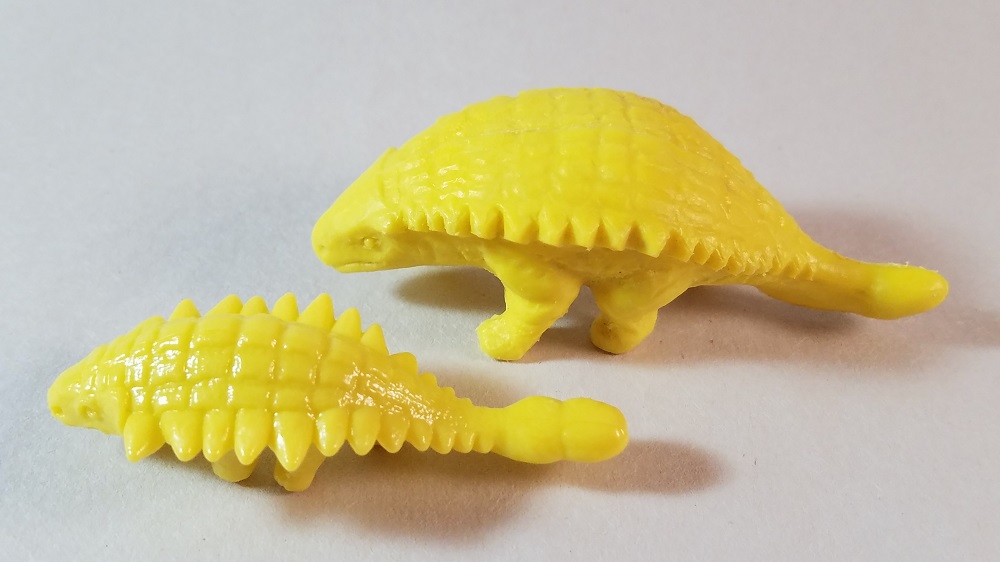
While Sinclair’s few figurines tended to be minimalistic in fine details, I feel the Ankylosaurus still ended up getting a short end of the deal. The bottom pair of hornlets, situated around the cheeks, are missing entirely. There are some grooves in the animal’s flanks and the armor plating is arranged in a simple checkerboard pattern with a single row of spikes along each side down to the tail, which culminates in a club that’s poorly defined from the main section. The face of the model is entirely bland and the spikes along the sides are blocky and look somewhat crude in their cutting. One detail of note is a raised vertebral line down the back, underneath one of the center rows of armor. Otherwise, though, there isn’t much definition to the design and anatomy of the figure.
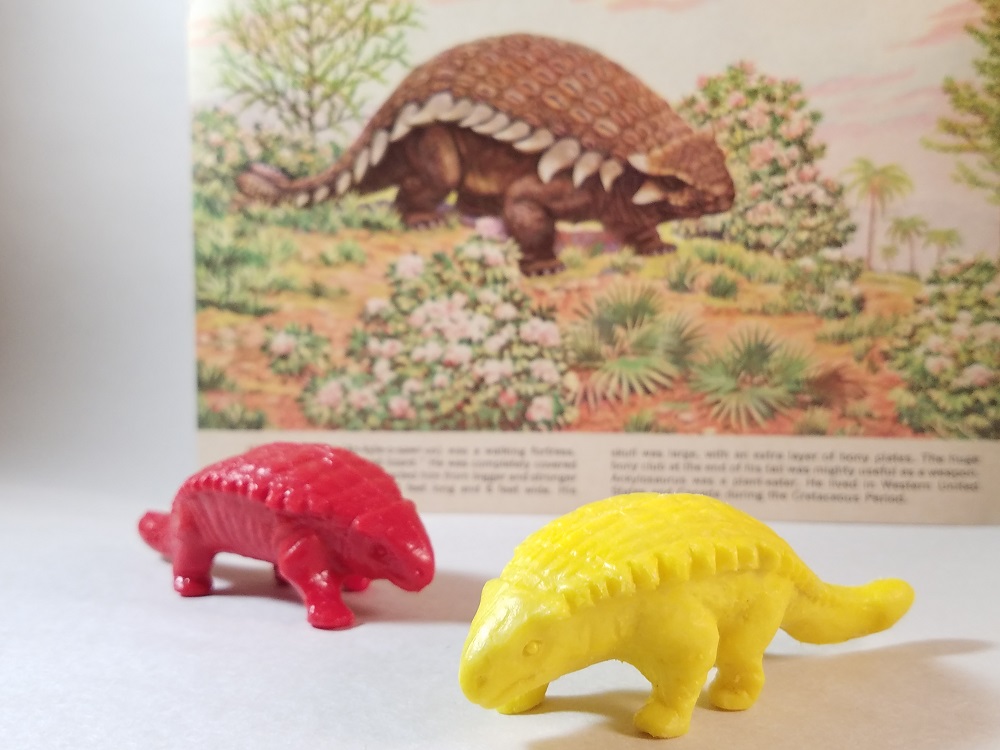
After being sold in Sinclair gas stations for some years after the World’s Fair, the molds for the figurines were eventually acquired by Dimensions for children, who recast the toys along with other brand molds for new assorted playsets. Distinguishing originals from recasts can be tricky for Sinclair figures, as little information has been published or preserved. There are two Ankylosaurus figurines in my collection: one in a matte yellow and another in a glossy red. Both figures bear the name and length engravings on the right side of their tail. The yellow model has two mold circles on the right legs, while the red model has only one on its left flank. DFC figures often have a different plastic quality, so the red version pictured here most likely represents a recast. The yellow version seems more like an original to me; however some sources say the originals had engravings on their left side, not the right. Committed collectors may want to be mindful of these differences when seeking out more figures for themselves.
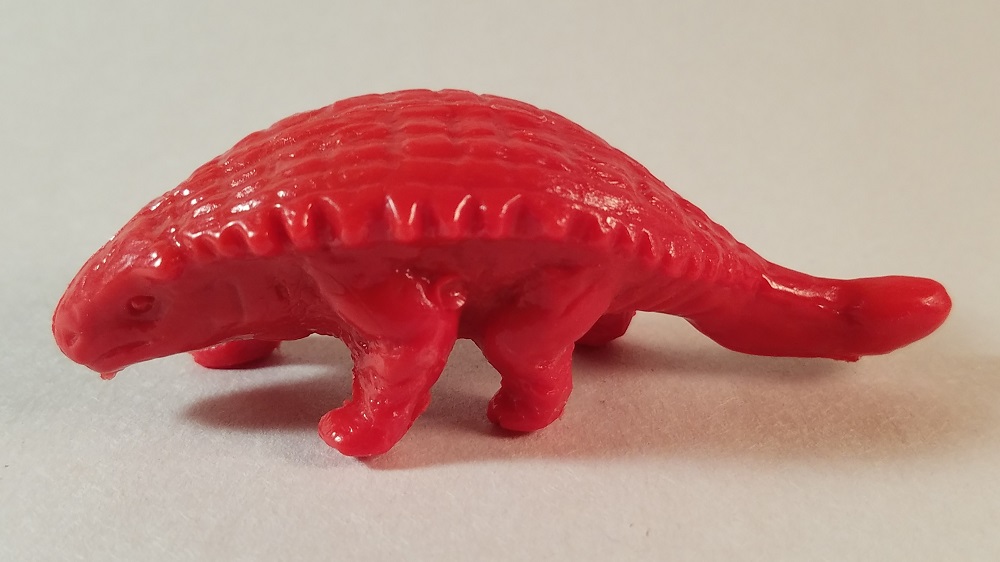
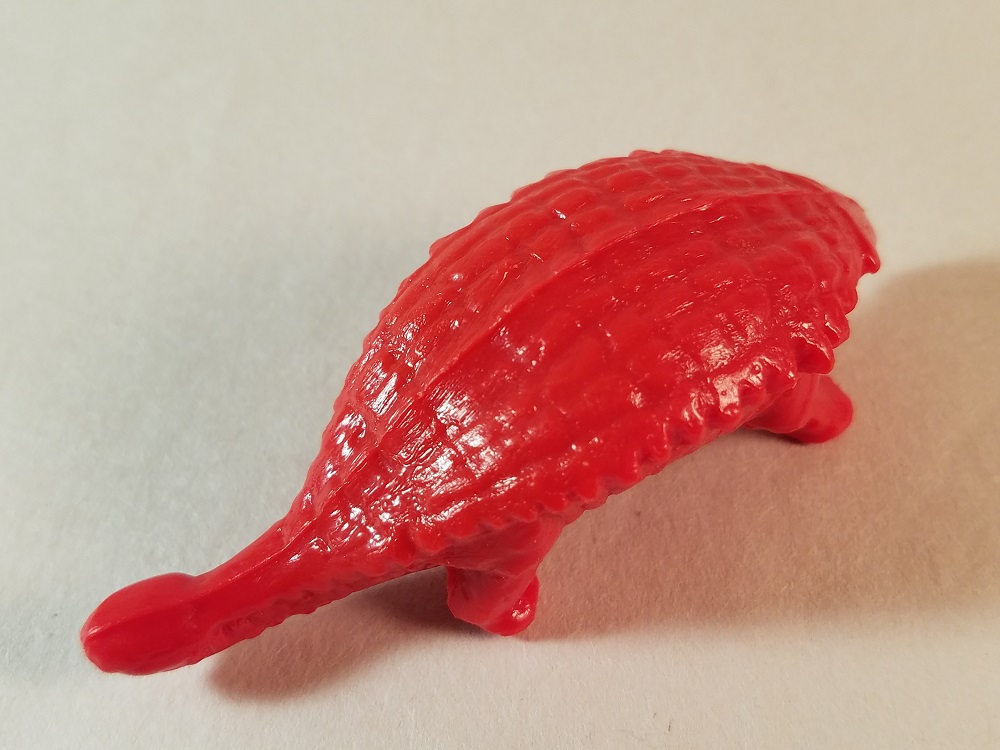
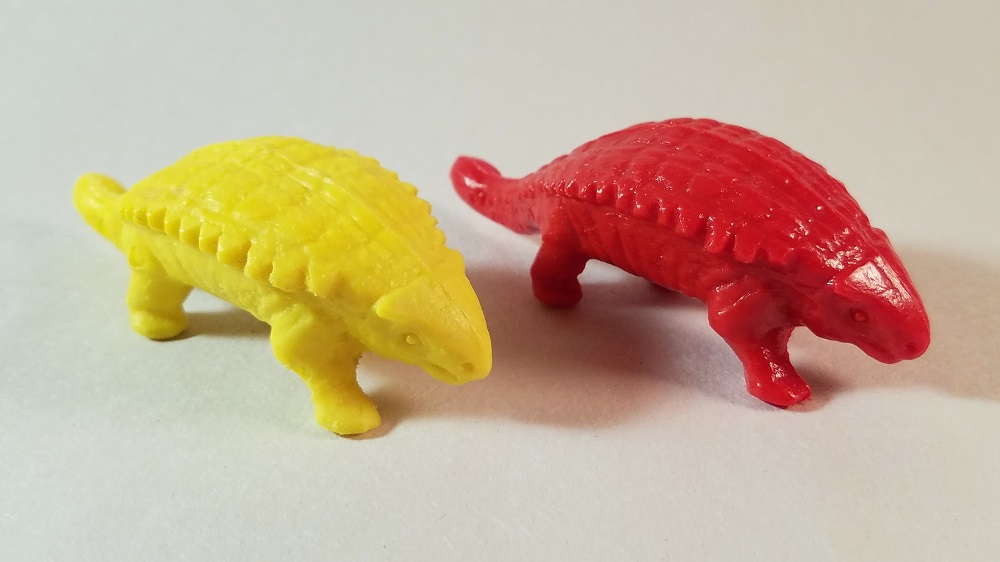
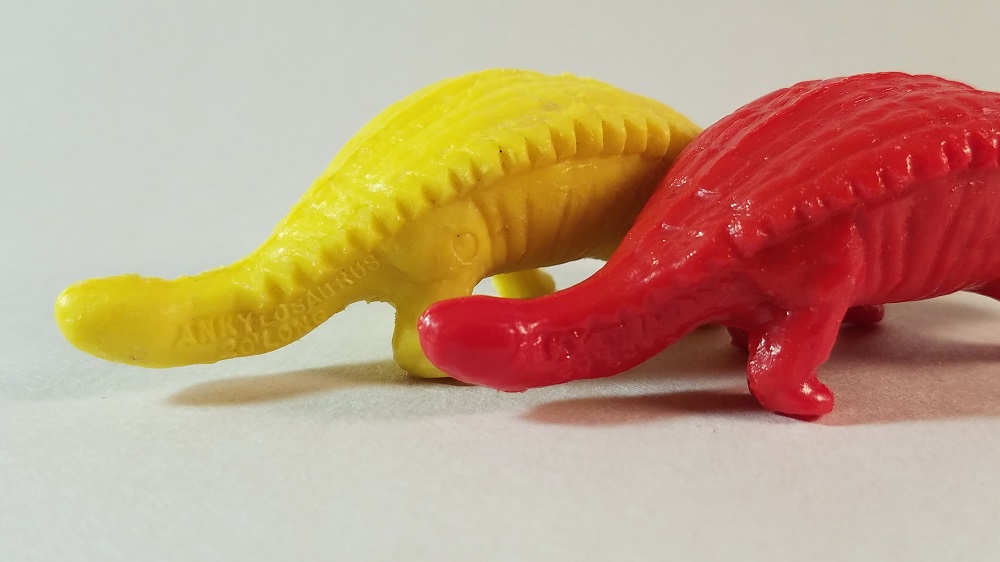
I’m inclined to say this Ankylosaurus is the weakest member of the Sinclair Dinoland set. While the figurine is not without its charm, it doesn’t have the same polish to its design that I found so striking about the line in the first place. Having said that, it’s still a welcome addition to my collection and displays just fine alongside the rest of the Sinclairs as well as other vintage dinosaur brands. Sinclairs don’t always pop up consistently in the aftermarket, so interested dino collectors are advised to watch eBay and second-hand sites like eCrater regularly for deals on individual listings or larger toy lots.
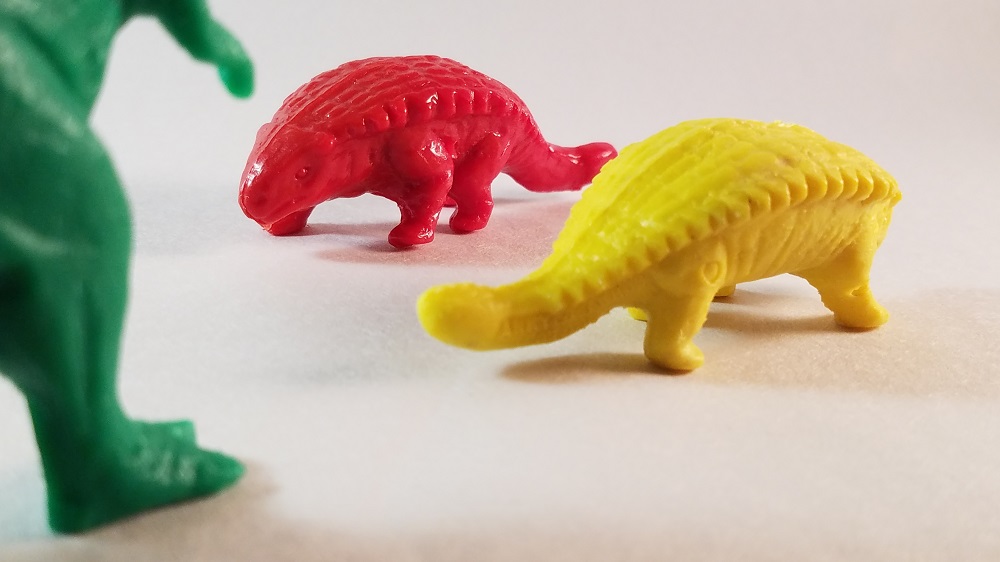
Disclaimer: links to Ebay and Amazon on the DinoToyBlog are affiliate links, so we make a small commission if you use them. Thanks for supporting us!




Hello,
Actually the molds ended up being used & retooled (or copied) for the 1969-1970 NYC American Museum of Natural History for it’s centennial. Names were removed (in some cases) & teeth were added to the T rex. So, the DFC dinos were cast from these molds shown by the fact by the AMNH & the DFC T rex both have teeth & the lose of details in both. The AMNHs are very rare as they were only made that one year & only sold through the museum gift shop.
I’m usually more forgiving of older figures but this one is pretty pitiful. Marx, Inpro, and even the Tim Mee figure are all superior. Still, I would like to have one someday. Great review and photographs, as always.
I suppose every company has to strike out at some point. At least its compatriots make up for its loss!
Indeed they do!